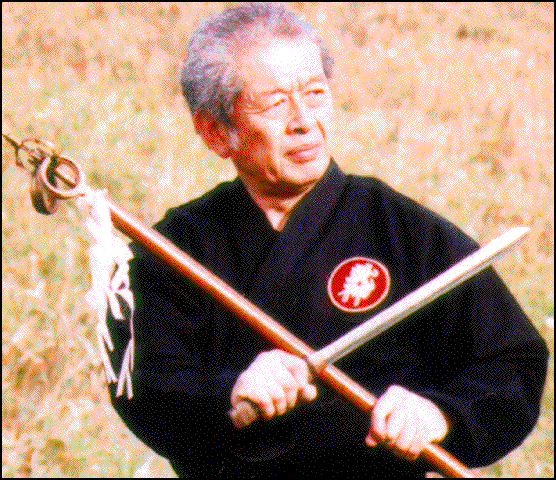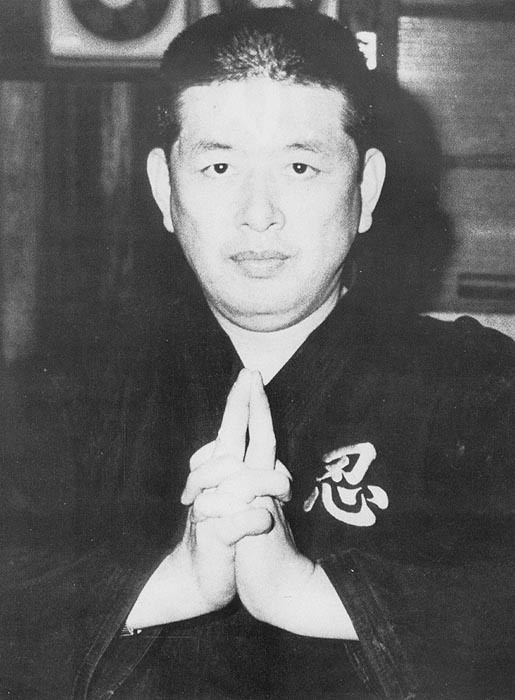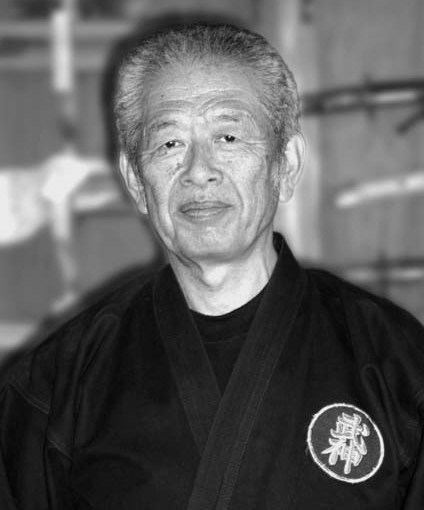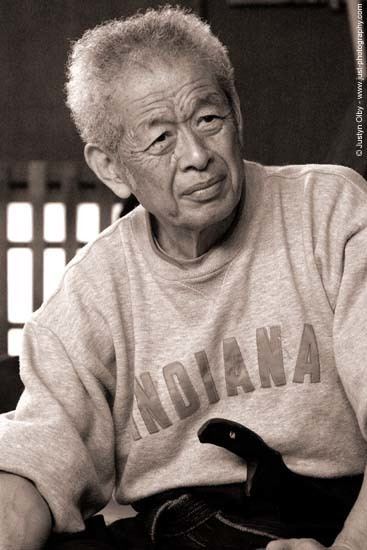Style Ninjutsu | Name Masaaki Hatsumi Organizations founded Bujinkan | |
 | ||
Born December 2, 1931 (age 93) ( 1931-12-02 ) Books Essence of ninjutsu, The grandmaster's book of ni, Unarmed Fighting Techniqu, Stick Fighting: Techniqu, Advanced Stick Fighting Similar People Stephen K Hayes, Gozo Shioda, Frank Dux, Lewis Gilbert | ||
tribute to the last toshitsugu takamatsu his successor masaaki hatsumi


Masaaki Hatsumi (初見良昭 Hatsumi Masaaki, born December 2, 1931), formerly Yoshiaki Hatsumi, is the founder of the Bujinkan Organization and is the current Togakure-ryū Soke (Grandmaster). He currently resides and teaches in Noda, Chiba, Japan.
Contents
- tribute to the last toshitsugu takamatsu his successor masaaki hatsumi
- Ninja grandmaster ninjutsu pain compliance techniques masaaki hatsumi
- Biography
- Schools
- Teachings
- Films
- Ninjutsu lineage
- Awards
- Publications
- References

Ninja grandmaster ninjutsu pain compliance techniques masaaki hatsumi
Biography

Hatsumi was born in Noda, Chiba on December 2, 1931. He heavily participated in sports during his school years, along with martial arts and theater, including becoming "captain of the football team". While attending the Meiji University, he continued learning judo and eventually rose to Yudansha or Dan rank. He also began teaching Judo during his time at the university to American soldiers at the nearby Yokota Air Base. After graduating, Hatsumi began to search for a teacher to further his study of martial arts. He began his Kobudo training under Ueno Chosui. When he was 26 he met Ueno's teacher, Toshitsugu Takamatsu, known as "the Tiger of Mongolia". Hatsumi was accepted as Takamatsu's student and spent fifteen years on Honshu Island learning various ninjutsu styles from Takamatsu and other members of the Takamatsu family, also he continued to learn judo, Shito Ryu karate, aikido, and kobudo.

Takamatsu died in Nara, Japan in 1972 after advancing Hatsumi from student to Soke and bestowing on him "all the art of the nine schools", and of course the grandmaster's scrolls, three of which he indicated were ancient ninja schools and six samurai jujutsu schools of martial arts. Hatsumi went on to found the Bujinkan Dojo in Noda, Japan to teach the nine schools to other students. His first trip to the United States was in 1982 and he has since continued to participate in yearly ninjutsu Tai Kai (gathering) around the world.
Hatsumi also worked as a Seikotsu-in (整骨院) bonesetter after his graduation and was chairman of the Writers Guild of Japan at one point in time. He was the writer of a martial arts magazine Tetsuzan, which was "distributed in 18 countries."
Schools
Masaaki Hatsumi has inherited the position of sōke (headmaster) of nine ryū (schools of martial arts):
Teachings
Masaaki Hatsumi focuses the training of the Bujinkan on the "feeling" of technique or what he terms the feeling of real situations. Hatsumi has a non-standoffish teaching approach, leading Black Belt magazine to call him "wild, funny, unpredictable, and a cross between Charlie Chaplin and Obi-Wan Kenobi."
Hatsumi focuses on teaching taijutsu to his students, as the other ninja arts have no need to be practiced in modern times, besides for "historical study".
Films
He has also served as a martial arts advisor to various films and television productions, including the James Bond movie You Only Live Twice, and in the first film from the highly popular Japanese series Shinobi no Mono. He also appeared in and was the stunt coordinator for the Japanese tokusatsu television series Sekai Ninja Sen Jiraiya as the titular hero's mentor and father figure, Tetsuzan Yamaji.
Ninjutsu lineage
Hatsumi claims that ninjutsu was developed by Japanese mountain clans, using "esoteric skills and philosophies" brought to Japan by Tang Dynasty exiles.
The Iga-ryū Ninja Museum of Japan lists the only legitimate inheritor of authentic Ninjutsu as Jinichi Kawakami. This may be a biased opinion as Jinichi Kawakami is also the honorary director of the Iga-ryū Ninja Museum, a commercial enterprise and tourist attraction.
The 1978 edition of the Bugei Ryuha Daijiten includes the full sōke lists for Masaaki Hatsumi's ryūha. It also includes the following statement regarding Togakure-ryu: "genealogy includes embellishments by referring to data and kuden about persons whose existence is based on written materials and traditions in order to appear older than it actually is."
According to Donn Draeger: "The late Fujita Seiko was the last of the living ninja, having served in assignments for the Imperial Government during the Taisho and Showa eras. No ninja exist today. Modern authorities such as T. Hatsumi are responsible for most research being done on ninjutsu."
